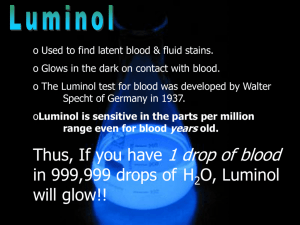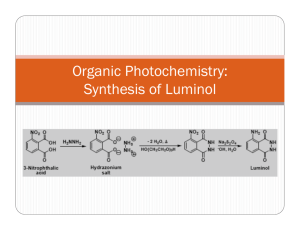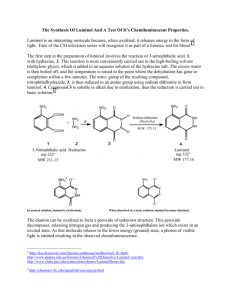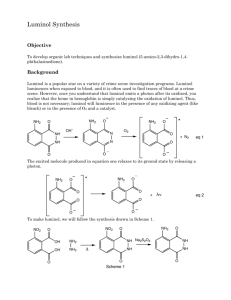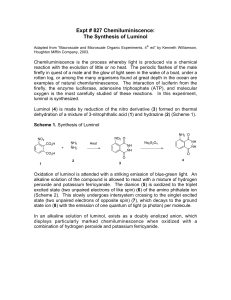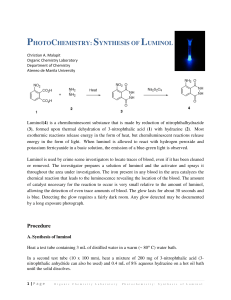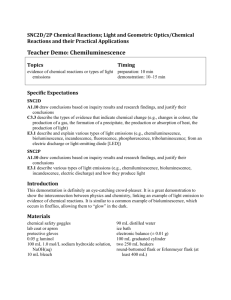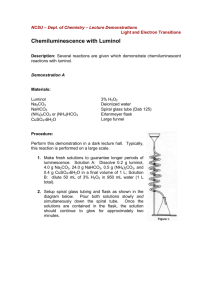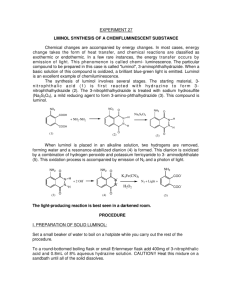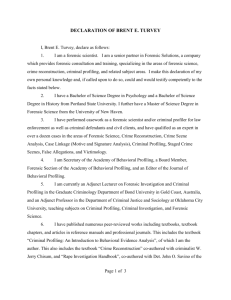Luminol Lab Report: HNMR Analysis & Synthesis Questions
advertisement
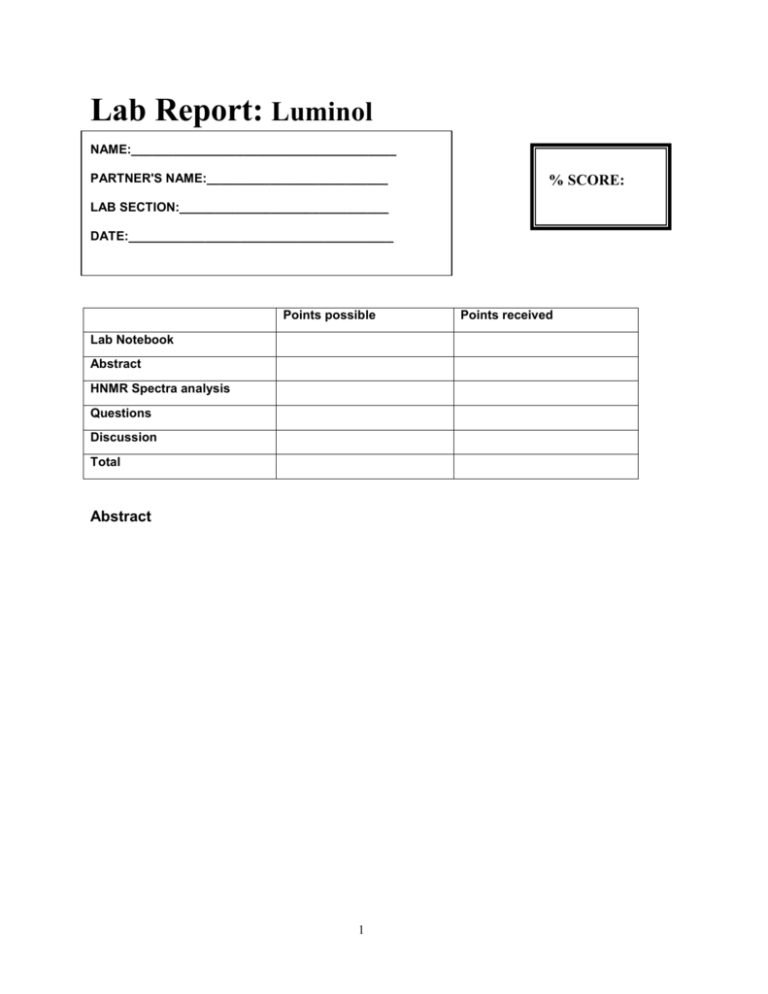
Lab Report: Luminol NAME:______________________________________ PARTNER'S NAME:__________________________ % SCORE: LAB SECTION:______________________________ DATE:______________________________________ Points possible Lab Notebook Abstract HNMR Spectra analysis Questions Discussion Total Abstract 1 Points received A. HNMR of 3-nitrophthalic acid and luminol NO2 O 1) Using splitting patterns and the benzene substituent tables in A H the back of your manual Label the peaks on the HNMR below below with hydrogens A, B and C on the 3-nitrophthalic acid structure at right. The boxed region is expanded for better view of splitting. OH OH BH H C 2 O 2) Explain how you determined each assignment of the HNMR in 1. Discuss splitting patterns and substituent effects in your explanation. 3) Show a calculation for the coupling constant for 2 protons ortho to each other in 3-nitrophthalic acid. Is your calculated coupling constant within the accepted range for ortho protons? 4) Show a calculation for the coupling constant for 2 protons meta to each other in 3-nitrophthalic acid. 3 5) The spectra below represent the expanded aromatic protons in HNMR of luminol and an unknown aromatic compound. Identify the spectrum below that represents the luminol product and explain your choice. Luminol NH2 O NH NH O 4 B. QUESTIONS: 1. What is the role of the triethylene glycol (TEG) in the first step of the reaction? 2. The second step in the synthesis where 3-nitrophthalhydrazide is converted to luminol is an oxidation/reduction reaction. Is the 3-nitrophthalhydrazide undergoing an oxidization or reduction? List the specific reagent that is causing the change? 3. The 3-nitrophthalhydrazide is precipitated out of water but dissolves in 3M NaOH, suggest a reason for this. 4. Light is emitted as the electrons move from higher to lower electronic orbitals. How do the electrons obtain energy to move to higher orbital initially? Would you classify this reaction as exothermic or endothermic? 5. In neutral aqueous solution the luminol molecule exists as the zwitterion on right below. If the pKa of the conjugate acid of the aromatic amino nitrogen is 5.3 (labeled) what can you conclude about the pKa of the amide hydrogen (on NA at left)? NH2 pKa:5.3 NH3 O O H 6. NA N NH NH O O 5 6. It has been proposed that an intermediate in the light emitting reaction is formed from a Diels Alder reaction of the luminol dianion and oxygen. Show the Diels Alder product of the proposed reaction. NH2 O N + O2 N O C. RESULTS Was your reaction successful? Did a solution of your luminol glow when mixed with the peroxide /iron solution? If you did not have success at this synthesis, offer an explanation. 6

